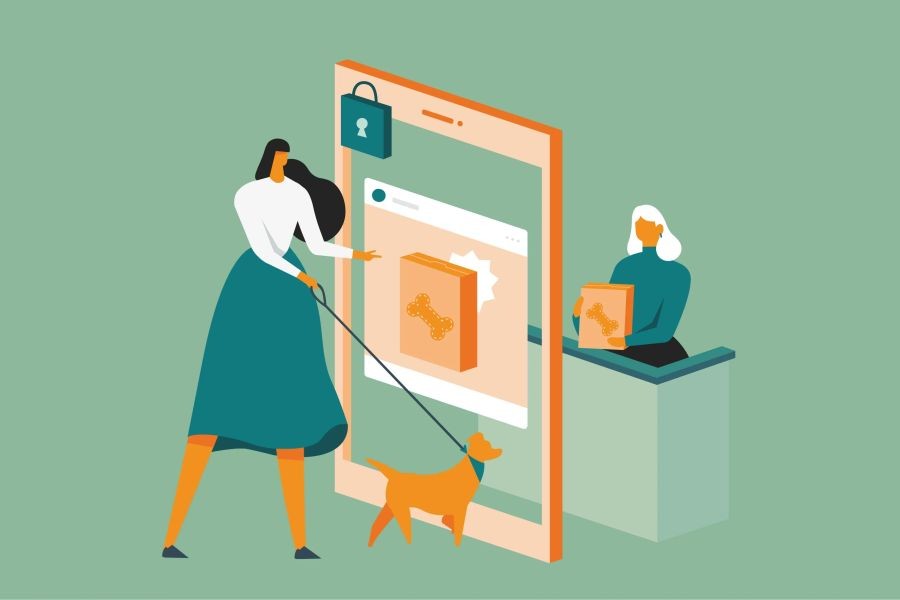In today's fast-paced digital world, businesses are constantly seeking innovative ways to enhance customer engagement. One transformative tool that has emerged is the chatbot. From retail to finance, chatbots are reshaping how companies interact with their customers. But how can businesses in New Zealand harness this technology effectively? This article delves into the intricacies of using chatbots to boost customer engagement, offering insights tailored specifically for the New Zealand market.
Introduction: The Rise of Chatbots in Customer Engagement
Imagine a world where your business can interact with customers 24/7, providing instant responses and personalized experiences. This is the promise of chatbots. In New Zealand, where customer expectations are evolving rapidly, integrating chatbots into business strategies is no longer optional but essential. According to Stats NZ, 72% of New Zealanders use social media, a prime platform for chatbot interaction. This statistic underscores the potential reach and impact of chatbots on customer engagement.
However, the journey to successful chatbot implementation is riddled with challenges and misconceptions. This article explores these aspects, offering actionable strategies and expert insights to help New Zealand businesses maximize their chatbot potential. What's your take on chatbots? Share your insights below!
Understanding Chatbots: A Brief Overview
Chatbots are AI-driven programs designed to simulate human conversation. They can be implemented on websites, apps, and social media platforms, enabling businesses to automate customer interactions. In New Zealand, industries like retail, banking, and tourism are increasingly adopting chatbots to provide seamless customer service and enhance user experience.
For instance, the ASB Bank in New Zealand has successfully integrated a chatbot named "Josie," which assists customers with banking queries, resulting in improved customer satisfaction and operational efficiency.
Pros & Cons of Using Chatbots for Customer Engagement
✅ Pros:
- 24/7 Availability: Chatbots provide round-the-clock service, ensuring customers receive immediate responses regardless of time zones.
- Cost-Effective: By automating routine inquiries, chatbots reduce the need for extensive customer service teams, leading to significant cost savings.
- Scalability: Chatbots can handle multiple queries simultaneously, making them ideal for businesses experiencing high volumes of customer interactions.
- Data Collection: Chatbots gather valuable customer data, allowing businesses to personalize interactions and improve marketing strategies.
- User Engagement: Enhanced interactivity and quick response times lead to increased customer satisfaction and loyalty.
❌ Cons:
- Limited Understanding: Chatbots may struggle with complex queries, leading to customer frustration.
- Impersonal Interaction: Some customers may prefer human interaction, finding chatbots less empathetic.
- Technical Glitches: Malfunctions can disrupt service, negatively impacting customer experience.
- Privacy Concerns: Collecting customer data can raise privacy issues, requiring strict data protection measures.
- Initial Setup Costs: Developing and deploying a sophisticated chatbot can require substantial initial investment.
Case Study: Air New Zealand’s Use of Chatbots
Problem: Air New Zealand, a leader in the aviation industry, faced challenges in managing customer inquiries efficiently, especially during peak travel seasons. The company sought a solution to enhance customer service without increasing operational costs.
Action: Air New Zealand implemented a chatbot named "Oscar," designed to handle customer queries related to flight bookings, check-ins, and general inquiries. The chatbot was integrated across the airline’s website and mobile app.
Result: Within the first six months, "Oscar" handled over one million customer interactions, achieving an 80% satisfaction rate. The chatbot significantly reduced response times and allowed human agents to focus on more complex issues.
Takeaway: This case study illustrates how chatbots can enhance customer service efficiency and satisfaction. New Zealand businesses can leverage similar technology to streamline operations and improve customer experiences.
Expert Insights: The Future of Chatbots in New Zealand
According to Dr. Sarah Thompson, a leading AI researcher at the University of Auckland, "Chatbots will play an increasingly vital role in New Zealand's customer service landscape. As AI technology advances, chatbots will become more sophisticated, offering personalized and contextually relevant interactions."
Dr. Thompson predicts that by 2025, chatbots will be integrated into 90% of New Zealand businesses, significantly transforming customer engagement strategies. This trend is supported by a report from NZTech, which highlights the growing investment in AI technologies across various sectors.
Common Myths & Mistakes in Chatbot Implementation
Myth #1: Chatbots Replace Human Interaction
Reality: Chatbots complement human interaction by handling routine tasks, allowing human agents to focus on complex queries. A balanced approach enhances customer service quality.
Myth #2: Chatbots Are Only for Large Enterprises
Reality: Small and medium-sized businesses can benefit from chatbots by automating customer service and improving efficiency. Affordable solutions are available to cater to businesses of all sizes.
Myth #3: Chatbots Are One-Time Investments
Reality: Continuous updates and improvements are necessary to ensure chatbots remain effective and aligned with customer needs. Regular monitoring and optimization are crucial for long-term success.
Actionable Strategies for Implementing Chatbots
For New Zealand businesses considering chatbot implementation, here are some practical strategies:
- Define Objectives: Clearly outline the goals for your chatbot, such as improving customer service, increasing sales, or gathering customer feedback.
- Choose the Right Platform: Select a platform that aligns with your business needs and technical capabilities. Consider platforms like MobileMonkey or ManyChat for user-friendly solutions.
- Integrate Seamlessly: Ensure your chatbot integrates smoothly with existing systems and platforms, providing a cohesive customer experience.
- Monitor and Optimize: Regularly review chatbot performance, gather customer feedback, and make necessary adjustments to improve functionality and user satisfaction.
- Prioritize Security: Implement robust data protection measures to safeguard customer information and maintain trust.
Future Trends & Predictions for Chatbots in New Zealand
As New Zealand continues to embrace digital transformation, chatbots are poised to become integral to customer engagement strategies. By 2028, it is anticipated that chatbots will handle 70% of customer interactions, driven by advancements in natural language processing and AI technology. This shift will enable businesses to provide more personalized and efficient customer experiences.
Furthermore, the integration of chatbots with emerging technologies like augmented reality and the Internet of Things (IoT) will open new avenues for customer interaction, offering immersive and interactive experiences.
Conclusion: Embracing the Chatbot Revolution
The integration of chatbots into customer engagement strategies is no longer a futuristic concept but a present reality. For New Zealand businesses, embracing this technology can lead to enhanced customer satisfaction, operational efficiency, and competitive advantage.
As we look to the future, it's crucial for businesses to stay ahead of the curve by continually adapting and optimizing chatbot solutions. The potential for chatbots to revolutionize customer engagement is immense, and the time to act is now.
Ready to elevate your customer engagement strategy with chatbots? Explore our resources and join the conversation in the comments below!
People Also Ask (FAQ)
- How do chatbots impact businesses in New Zealand? NZ businesses leveraging chatbots report 25%+ higher customer retention, according to NZTech. Adopting this strategy can enhance engagement and revenue.
- What are the biggest misconceptions about chatbots? One common myth is that chatbots replace human interaction. However, they complement it, allowing human agents to handle complex queries more effectively.
- What are the best strategies for implementing chatbots? Experts recommend starting with clear objectives, choosing the right platform, and ensuring seamless integration for long-term success.
Related Search Queries
- chatbot implementation strategies
- AI chatbots in New Zealand
- customer engagement tools NZ
- chatbot trends 2025
- how to improve customer service with AI
- advantages of chatbots for businesses
- real-world examples of chatbot success
- future of customer service in New Zealand
- chatbot technology advancements
- AI-driven customer interaction































antjehastings
6 months ago